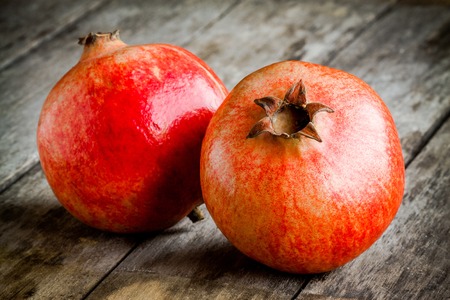The pomegranate, more correctly known by its Latin name Punica Granatum, is a multi-stemmed tree with shiny foliage and tubular shaped flowers. It has the advantage to the gardener of being self-fertile so only one need be grown to achieve a crop. The tree bears beautiful orange flowers from June to September and, at the base of the flowers, leathery-skinned brown fruit are formed. These will ripen in a mild autumn ready for harvesting in October and November.

A warm, sheltered and sunny position, preferably near a south or west facing wall, should be chosen to grow pomegranates. This will help ensure ripening of the fruits. In colder northern regions of the U.K they can be grown indoors. Incorporate well rotted manure into the soil to create a rich and fertile area. The soil should also be well drained. Plant the tree at the same soil level as it was growing on the nursery. The tree may take two to three years to crop and up to six years for the best harvests. The base of the tree should be kept as weed free as possible. Mulch around the tree in spring to help seal in moisture. Keep it well watered in dry periods. The plants are generally pest and disease free.
To keep the tree in its ideal multi-stemmed form, select three or four low branches to form a framework. Remove crowded and damaged branches. Shorten the main branches by a third of the previous season’s growth to develop a well branched plant. The pruning should be carried out in spring or summer if grown outdoors or in winter if grown indoors. After this, do not overprune otherwise fruiting will be decreased. Remove suckers from the base of the plant.
A pomegranate can tolerate temperatures as low as five degrees Fahrenheit or minus fifteen degrees centigrade. In very cold areas the tree can be grown under cover. Heat is required to ripen fruit in the autumn. The height is around eight to ten feet (2.4-3metres) and the spread is about five to eight feet (1.5-2.4 metres). Named varieties such as Pomegranate “Provence” available from Thompson and Morgan, will provide more fruit.
When the crown at the base of the fruit is curled and brown, remove the fruits using secateurs. The fruits should be the size of an orange with a shine to the red-tinged leathery skin. The skin and pith are inedible. The juicy flesh is packed around the seeds of the fruit. These can be scooped out with a spoon.

If you wish to propagate your own tree, seeds can be sown in March. The flesh around the seeds can be removed with kitchen towel. A temperature of sixty-one degrees Fahrenheit or sixteen degrees centigrade is required for germination. Also three inch or eight centimetre cuttings of half ripened lateral shoots with a heel can be taken in July.
Mark Snelling

